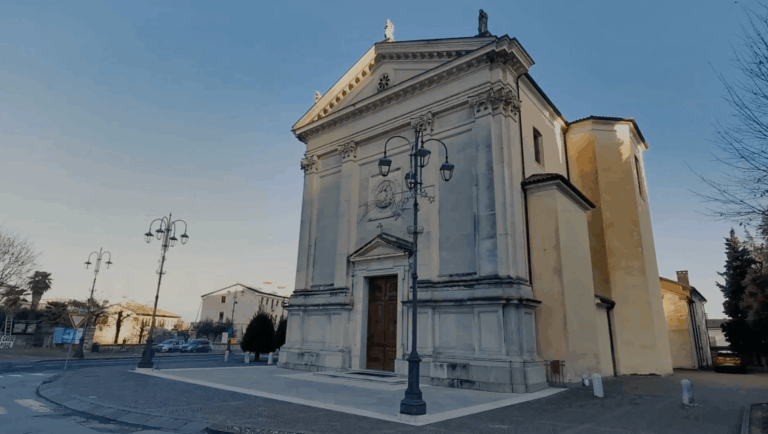ARTISTS’ ROADS
LE VIE DEGLI ARTISTI
watch the videos at the bottom of the page!
VIDOR
Vidor: Guido Cadorin, the Courage of Reconstruction
The Great War ravaged this land that flanks the River Piave, as it emerges from the Belluno valleys and enters the plain.
But even the immediate post-war period left a deep imprint. To the names of local towns was added the tragic suffix “della Battaglia,” of the Battle. The River Piave permanently changed grammatical gender. And part of its riverbed became the “Island of the Dead.”
Reconstruction came swiftly, in a dialogue between “as it was, where it was” and new choices that gave form to bold ideas, especially in art.
Sacred art was no exception.
A major innovator was the Venetian painter Guido Cadorin, who reinterpreted the ancient tradition of fresco painting in a modern key.
San Pietro di Feletto, Follina, Soligo, Farra di Soligo, Col San Martino, and finally the Abbey of Santa Bona in Vidor: these are the milestones of a fresco tradition stretching from the 13th to the 15th century.
In 1921, Cadorin arrived at the parish church of Col San Martino, leaving behind frescoes with an elegant graphic style.
In 1925, he painted the Pentecost in the dome of Moriago della Battaglia.
Between 1922 and 1926, he was active in Vidor.
The town, once a crossing point and of strategic importance during the First World War thanks to its bridge, had been left in ruins.
Cadorin painted in the parish church, in the Church of Our Lady of Sorrows on the hill of the castle, by then transformed into a war memorial, and decorated Villa Zadra, home to a prominent family in the silk industry, with imaginative Art Nouveau motifs.
During this period, he was also called to work at the Vittoriale by Gabriele D’Annunzio.
Cadorin’s work, and the collaborations he fostered, went on to inspire other artists who later worked in this area: from Giovanni Zanzotto to Bepi Modolo, Carlo Donati, Valentino Canever, Carlo Conte, and Marta Sammartini.
The ceiling of the single-nave parish church, dedicated to the Holy Name of Mary, is graced with a monumental Ascension.
Below, in the darkness, we glimpse three sleeping soldiers.
Their sleep symbolises humanity’s inability to grasp the mystery of the Resurrection.
The Three Marys appear as shadowy figures standing at the dawn of a New Day.
Before them, a massive, solemn angel of light sits atop the empty tomb, gesturing decisively toward the upper register.
Here, the Resurrection becomes an absence transformed into presence on Mount Tabor.
The guiding elements are light and colour.
The clouds part to reveal the mountain crowded with Apostles, and above it all, the dazzling white figure of Christ seems drawn upward by a vortex of clouds and angels.
From the darkness of the barren earth, now that time and history are suspended, we are led toward the most intense light.
Guido Cadorin was a Venetian painter.
He trained in that lively city at the dawn of the twentieth century.
He studied under Duilio Korompay, met Modigliani, and by the age of sixteen was already exhibiting at Ca’ Pesaro.
In the early maturity of his thirties, he could conceive grand visionary works where abstraction and realism coexisted.
He saw himself as heir to the purest tradition of the Quattrocento, from Piero della Francesca to Fra Angelico.
But he rejected the academic painting of the time, with its sentimentalised depictions of sacred figures.
His treatment of the sacred was imaginative and free, yet always the fruit of considered thought. He took the themes of tradition and reinterpreted them in the forms and colours of modernity.
MORE EXPERIENCES!
Il Sacro nella ricostruzione:
- la parrocchiale di Moriago
- il Monumento ai Caduti di Segusino
- il campanile di Valdobbiadene
- il duomo di Pieve di Soligo
MULTIMEDIAL MAP: “ARTISTS’ ROADS – LE VIE DEGLI ARTISTI- EN”!

